I've promised you a lesson on point of view magic. But first, I have a question for you: Have you ever taken piano lessons?
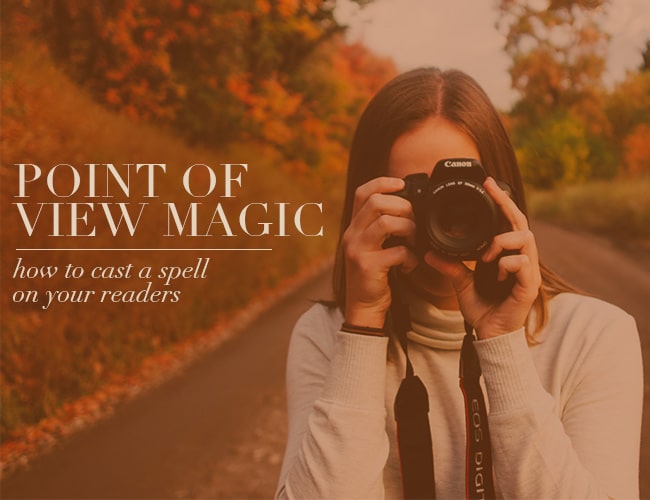
I’ve been teaching piano for about twenty years, and I think it’s safe to say you never had a piano teacher like me. I like to shake it up, mix it around, and really get the wheels turning inside my students’ heads. There’s so much more to music than most people ever conceive of, and my goal is to open up doors and windows to a whole world of possibility.
In my lessons, we play Pictionary, go on treasure hunts, and decorate Christmas trees any time of year. I’m a “wax on, wax off” kind of teacher. I foster technique and value theory, not only teaching my students how to fish, but how to build the fishing pole. And I start each lesson with a new student by asking a simple question:
When you play the piano, what parts of your body do you use?
I’m asking them to dig, to really think about what it means to create music. Everyone starts with the obvious answer—my hands. As I prod them to continue, I hear fingers, feet, shoulders, wrists, brain, elbows, and so on. All good answers, I say, but keep digging. I place a piece of music in front of them, something clicks and they shout—my eyes!
I’m always surprised at how long it takes to arrive at the answer I’m really looking for. We experience music through our ears, and our ears are the most important tool we have for learning music. They are our interface, our connection with the experience. Train the ear to appreciate and understand the structure beneath the music, and you’ve tapped into true artistry.
What do we use when we write?
Words, of course. But the irony is, as writers our goal should be to use words to create an experience for the reader where she won’t see the words, where the words disappear as she is drawn deep into the story. We employ a whole toolbox of tricks and techniques to make this happen, but perhaps our most important tool, our interface, our connection with the experience, is point of view.
In my last article, I talked about the nuts and bolts of point of view. I emphasized that the content of the article was based on my opinion, and my experience, and acknowledged that a lot of writers may disagree and that each must weigh the value for themselves. Same goes for part two, with a further stipulation.
For the purposes of this article, I’ll be focusing on representational style writing, targeted to readers interested in getting lost in a good story. In other words, I’ll assume your goal when writing is to completely absorb the reader, allowing him to experience your story rather than merely reading it.
That said, let’s get to the magic!
One character, one filter
It’s crucial to understand that EVERY WORD of a story is told through a character’s point of view. If your personal voice comes into it, you’re writing an essay, an expository, an opinion piece, biography, or something else. All marvelous forms of writing, but when you’re writing a story, every bit of it must be conveyed through a character’s point of view.
If you grasp this single concept, it will catapult your writing to a whole new level.
Use only one viewpoint character per scene, and filter every word you write through that character. You do this by imparting information to the reader through special types of details:
1. Character-focused details
Remember, you are in your character’s head, filtering everything through his point of view. Use details that particular character would notice, and describe them in his voice.
For example, if your character is a brick-layer, he will notice the structure and material of the walls, and might use certain terms when describing them. If your character is a dressmaker, she will notice the type of seams used and know the origin of another character’s buttons. If your character is a small child, she will notice more things at her own eye level than an adult would.
2. Sensory details
Every piece of information that comes to the reader must pass through your character, and how do we receive information but through our senses?
If you watch Criminal Minds, you’ve seen the team walk victims and witnesses through what they call a Cognitive Interview, in which they attempt to recreate the experience through the use of sensory detail. What did you hear? Was it cold or hot? Did you smell anything?
Do something similar for your reader. Get inside your character’s head, experience what she’s experiencing, and describe it for your reader in a way that will engage his senses, immersing him in the story.
3. Specific detail
By this, I mean avoid using “fake” details. A “fake” detail is when you use a non-descriptive, generic term to describe something that’s important to the story or will come into play multiple times. For example:
Let’s say your character is running through trees. When you write “tree,” each reader conjures up a picture in his mind as he visualizes the scene. That’s precisely what you want to happen.
But what if your reader is imagining pine trees, or bronze-colored maples, and then later in the scene he discovers the story is set in Florida and the trees were palms. This shatters the picture he’d formed, bouncing him out of the story.
When you introduce a detail that plays an important part or will come up repeatedly, be specific enough the first time you describe it that your reader can accurately construct an image in her mind. And if you describe something, don’t name it until after you’ve described it. If you name it first, you’ve set up a “fake” detail that may jar the reader when you go on to describe it differently from what she pictured.
4. Opinionated details
Your character has an opinion—let it be known. The details your character uses in describing the story setting and his fellow characters are colored by his opinion, which adds to the development of his character.
Characters are revealed by their behavior and their interactions with others. Make sure their attitudes and opinions come through to the reader.
5. Emotional detail
“I’ll have what she’s having.” The famous line from When Harry Met Sally applies here. You want your reader to experience the emotions your character is going through, so use details to convey those emotions.
Avoid naming the emotion outright, and instead focus on what it feels like to be angry or heartbroken. What physical reaction takes place? How do you cope? What kind of memories or insecurities does it evoke?
Emotions, like opinions, will color the details you choose to include.
6. Consistent details
My mentor introduced me to this subtle and advanced maneuver by having me read the opening of a Mickey Spillane novel, One Lonely Night. Here are the first two paragraphs:
Nobody ever walked across the bridge, not on a night like this. The rain was misty enough to be almost fog-like, a cold gray curtain that separated me from the pale ovals of white that were faces locked behind the steamed-up windows of the cars that hissed by. Even the brilliance that was Manhattan by night was reduced to a few sleepy, yellow lights off in the distance.
Somewhere over there I had left my car and started walking, burying my head in the collar of my raincoat, with the night pulled in around me like a blanket. I walked and I smoked and I flipped the spent butts ahead of me and watched them arch to the pavement and fizzle out with one last wink. If there was life behind the windows of the buildings on either side of me, I didn’t notice it. The street was mine, all mine. They gave it to me gladly and wondered why I wanted it so nice and all alone.
If you pay attention to the details, you’ll notice a consistency in the picture Spillane presents and the opinion he’s expressing through the character’s voice. The night is cold and dark and lonely, but he likes it that way. Everyone else is imprisoned in buildings or cars, but he’s free—loose on the streets and he has them all to himself.
This sort of consistency lulls the reader right into the scene, and details that don’t fit land like a splash of cold water. Work to keep your details in the “color palette” you’ve chosen for the scene or chapter.
A few last details regarding the details
Never let your author’s voice enter into a description of the setting or another character! Always let your viewpoint character be the one to deliver the information to the reader.
Don’t overburden the story with too much detail. Pile it on with tedious exactitude, and your reader will weary fast, drop the load, and leave your book.
The place to slather on the detail—and I do mean thick—is at the beginning of each story, chapter, and scene. Any time there’s a break, you have to re-ground your reader and detail, as discussed above, is the way to do it.
Once you’ve got the reader grounded and connected, you can lighten up a little and employ a judicious sprinkling of details.
Close up, arm’s length, or ten-foot pole?
There are a variety of distances at which you can hold your reader, and a myriad of reasons for why you would want to. Think about personal space. The amount of space you comfortably keep between yourself and someone you’re conversing with, face to face, varies depending on the relationship you have with that person.
Kristine Kathryn Rusch has a rule for main characters. For the books she reads and writes, the main character must be a person you’d invite into your living room and be willing to spend three or four hours visiting with. That’s pretty much what you’re doing when you sit down to read a book.
“If you want to sell a lot of books,” she says, “this is key. You have to have a likeable, admirable main character that’s a little larger than life, or at least doing something a little larger.”
Distancing techniques
Determine, character by character, the distance you’ll keep them from your reader, and do this through choices in point of view and the depth and sorts of details you include. We could cover this topic in a three-day seminar and still have plenty left over to discuss, so all I can do here is skim the surface.
James Patterson is a master at this. Study his books—particularly the openings of scenes and chapters—to see how he does it.
Generally, the hero of your story will be pretty close, so use first person or third person limited and lots of detail of the type we covered above to pull your reader up nice and cozy.
Be cautious with distance for a character who will be revealed as a bad guy, or one who will die in the course of the story. If you let your reader in too close, you may lose them when that happens. Limit the details and use alternate techniques, like high stakes and story questions, to pull readers into a story when you’re dealing with unlikeable characters, moles, or red shirts.
Invisible words
So, a musician’s essential tool is his ears and a writer’s essential tools are her words. But the goal is to craft them in such a way that they disappear beneath the reader’s eye while holding him spellbound, like a magician who makes the table vanish under a levitating subject.
See, I told you there’d be magic!
What about you? Have you ever been pulled so deep into a book that the words flow past you unnoticed, and only the story matters? Tell us about it in the comments section.
PRACTICE
Write the opening scene for a story idea you’ve been keeping on the shelf, or use this prompt:
Jane sees a light on in the barn one night and goes to investigate.
Use a great deal of detail, as discussed in the article, to draw the reader in close and immerse them in the story. Think of who's telling the story, and filter every detail through their point of view. Write for fifteen minutes. When you’re finished, post the opening in the comments section and if you post, be sure to leave feedback for your fellow writers!
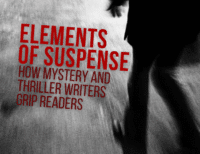
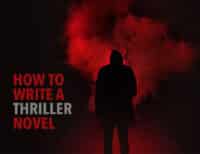
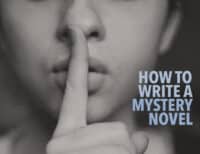
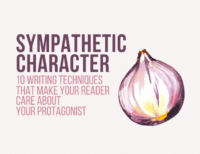



0 Comments
Trackbacks/Pingbacks